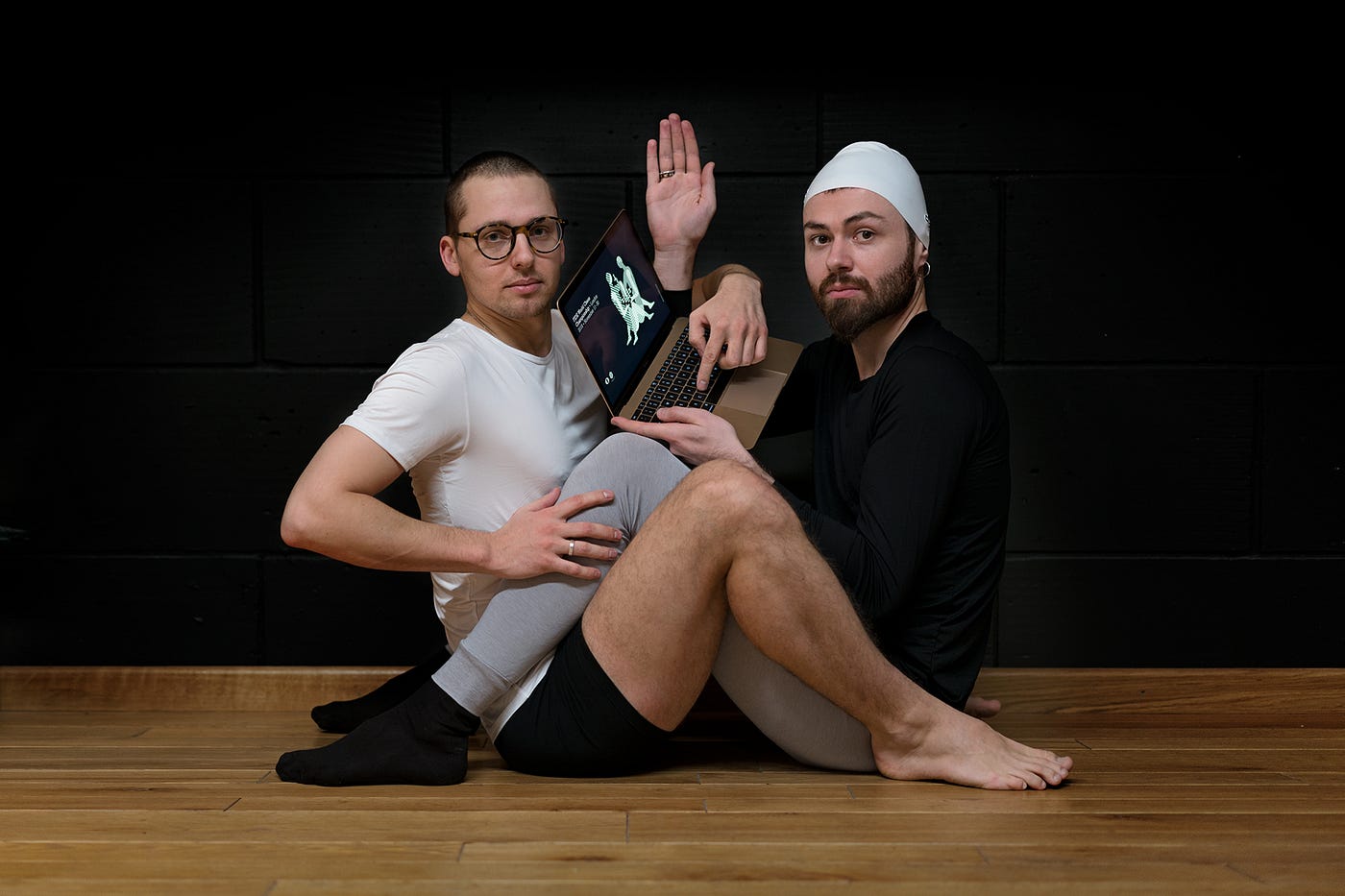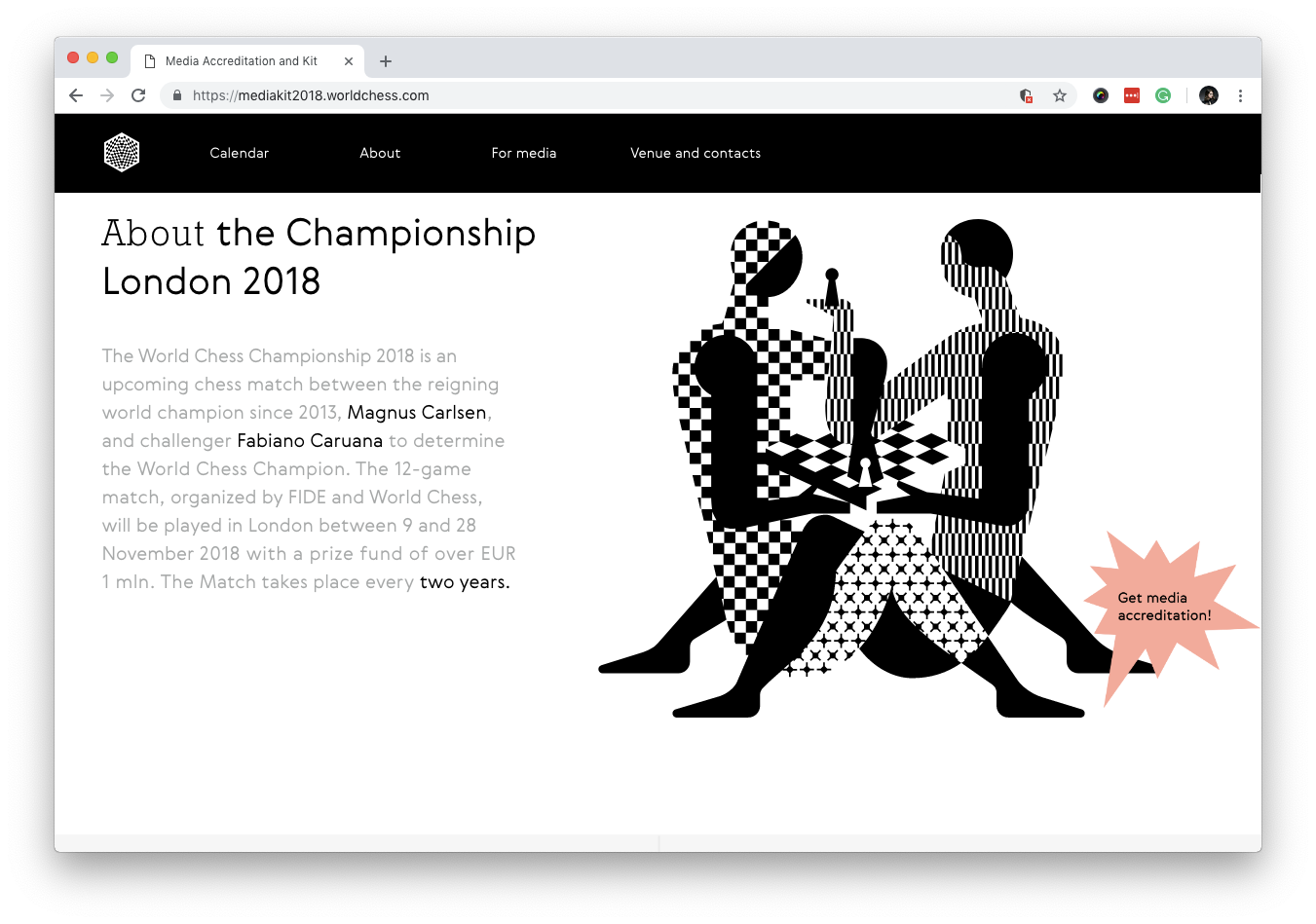Emotions before rationality: why designers reinvented the look of World Chess
The 2018 World Chess Championship begins in London on November 9. Moscow-based design consultancy Shuka created a thoughtful visual identity for the event. Shuka’s creative directors Ivan Velichko and Ivan Vasin explained how the business goals of the project impacted its look.

The 2018 World Chess Championship begins in London on November 9. Moscow-based design consultancy Shuka created a thoughtful visual identity for the event. Shuka’s creative directors Ivan Velichko and Ivan Vasin explained how the business goals of the project impacted its look.

Rivalry with Twitch and Netflix
The World Chess Championship is a two-year sports cycle like Formula 1 and the World Cup. It has qualification rounds and a final round is held every other year. Our first encounter with World Chess took place in 2016 when we were invited to make Key Visuals for the NY Championship. Half a year later the Chief Executive of World Chess, Ilya Merenzon, invited us to work on the visual style for the new cycle.

The key business goal of the new cycle was to establish a significant digital presence: organizers wanted to stream matches live and sell access via subscriptions. This meant that the positioning of the event needed to be rethought. The visual style of the previous cycle was developed by Pentagram: a quite reserved aesthetic, appealing to “intellectualism,” as the website of the consultancy put it.
About 600 million people all over the world play chess, but not all of them view this game as a battle of brains. For many it’s just an exciting challenge that stimulates positive emotions. That’s why our task was to develop an attractive and easy-to-grasp identity, which would make it easier to connect with the world chess.
Before the new cycle began we already knew that all of the games would be live streamed with voiceover commentary, like a TV show. This way, our main competitors seemed to be Twitch and Netflix, rather than other chess events. We tried to present the live stream shows as something nice to watch at home.

Flexible templates for rapid reaction
Our agency is responsible for the look of all promotional materials created during the championship. Quite often, the marketing and PR services make urgent commissions in the evening and need results by the next day. Readymag comes in really handy here.
To speed up the process we created several flexible Readymag templates for sponsorship offers and presentations for the championship managers. They customise these templates themselves by adding necessary texts and photos.

A play on emotions
In 1997 IBM supercomputer Deep Blue defeated Russian grandmaster and reigning world chess champion Garry Kasparov. The myth about the supremacy of the human intellect was dispelled and the subsequent frustration was so strong that for the next twenty years chess became almost expelled from the general media space. Since then chess has more often been presented as game played between a man and a computer than between two people.
We decided to reject this stereotype and focus on the emotional intensity of the game, instead of traditional associations. This is how the logo with two sitting players emerged. The image is not so far from reality: during championships a game can last for six to eight hours, which demands a lot of blood, sweat and tears. Chess is one of the most non-contact games, yet during the finals physical tension reaches a climax.

Our logo illustrates this relationship between players in an abstract manner. The patterns which constitute the figures represent the full spectrum of emotions that occur between them. We used these patterns in various types of communication: Instagram posts, promo campaigns on the website, and on wraps used for venue design.

The logo of the sitting players went viral: at first there were a lot of trifling jokes in the media and on Twitter but most grandmasters supported the design, saying our logo conveyed the desirable sensations of the game. The founders of Chess.com even made a cool video in which they compete in the same posture that is depicted in our logo.